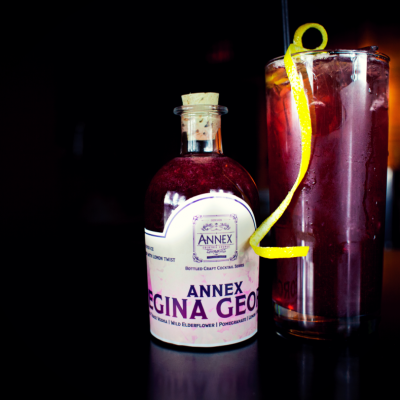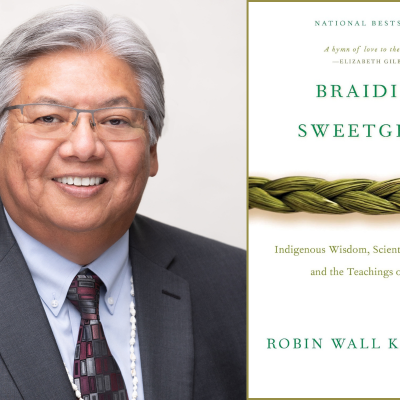Style Unlocked: The Collection of a Lifetime

From Zuni fetishes to a Matisse, David M. Roche shares stories behind his awe-inspiring art
David M. Roche, director and CEO of the Heard Museum, has been guided by his love for American Indian art since he was a boy growing up in Kenilworth, a suburb of Chicago. When he was 8, his parents took a trip to the Southwest and brought back Zuni fetishes and Hopi kachinas. He was hooked.
“I had never seen anything like it, and it sparked my imagination. It opened up the world to me and made me aware of other points of view, cultures and histories,” Roche said. “I was fascinated by American Indian art, history and culture. And now I’m the director of the Heard Museum, which is the largest private museum for American Indian art. Unbeknownst to my parents, they were opening up a gateway that’s been an inspiration to me for my entire life.”
As a boy, Roche would mow the lawn, shovel snow and stash birthday money to save up to buy Zuni fetishes from the Indian Tree Gallery in downtown Chicago, run by legendary dealer Marti Hopkins Struever. “It was a first of its kind because she was presenting American Indian art as classic art in a white-wall gallery space. It didn’t have the feel of a trading post. Marti treated me very well,” Roche said.
One Saturday, when he was 9 or 10, with money burning a hole in his pocket, Roche hopped on a train into the city by himself to visit Indian Tree Gallery. “I was that desperate to see what she had and to buy a fetish. When I walked into the gallery, she asked, ‘Do your parents know you are here?’ Which, of course they did not. It was not a safe thing for a kid to be doing, but I was that determined,” Roche said.
Roche considers himself fortunate to have always had a calling. “It’s always been a North Star for me,” he said. “Loving American Indian art has created adventures, one more after the other. I’ve never felt I’ve had to wander or stray.”
Roche has amassed more than 600 works in his private collection. Over the years, he has procured pieces from
galleries and auctions, commissioned works and purchased mementos from trips. He inherited pieces from family, and received others as gifts.
“Generally speaking, I live with things that I love. Something has to be aesthetically pleasing to me. Almost
everything I have is a particular marking of a journey or experience I had. I like to have positive associations with
everything I live with,” Roche said.
Recently, Roche and his dog Sancho — named after Sancho Panza, Don Quixote’s sidekick — moved into a 1930s adobe house in the historic Willo District, just walking distance from the Heard.
“Part of the joy of collecting for me is mixing things up and figuring out how they relate to each other,” Roche said. “In the living room, you have an Allan Houser sculpture. You have a Burkina Faso mask, which is sculptural. It’s not made as a work of art but has many of the same qualities. There is an Indonesian shadow puppet of a tiger made of a painted hide that would have been used in performance. Put that together with a print ‘La Pêche’ by Raoul Dufy, who was working at the same time as Matisse.”
Just adjacent, in the master bedroom, hangs the Matisse, “Nadia. Masque Souriant,” which Roche received as a gift. “Matisse was known for his sense of color and layering patterns. Later in life, his challenge was to be as expressive in black and white as he had been in color in the earlier part of his career. It’s all about the essence — using just enough to create an image and leaving just enough space so people could see themselves in it at the same time,” Roche said. “This particular image is repeated over and over in other works of art. What is neat about this piece is it’s the first artist proof of this very iconic image.”
Nestled on bookshelves amid family photos and books sit African and Navajo folk carvings, Mexican ceramics, and
a “singing mother” by the matriarch of Pueblo pottery Helen Cordero. This exemplifies Roche’s ability to combine pieces from different cultures, a theme that runs through his collection.
A standout in Roche’s collection is a Yokuts Indian stew basket. Yokuts were known for making a mush out of acorns. “They couldn’t put fire under the basket, so they would heat up stones and lower them in and that would
create the heat source,” Roche said. Beyond his love of baskets, what drew Roche to this piece was who owned it
before him — Rachel “Bunny” Mellon, the leading socialite, philanthropist, collector, style maven and Jackie O’s
best friend.
“She was an extraordinary art collector and very, very knowledgeable on many, many subjects. Her real passion
was gardening. She created the White House Rose Garden,” Roche said.
Sotheby’s, where Roche worked for 19 years as their specialist for American Indian art, was fortunate to sell her
collection. “Thousands and thousands of lots and everything sold. Everyone wanted to be a part of that auction and wanted a piece of Bunny Mellon’s legacy. She had one piece of American Indian art. It was a Yokuts basket, and I wanted it in the worst way,” Roche said.
But as an employee of Sotheby’s, he couldn’t bid in the auction — employees have to leave an absentee bid to avoid impropriety. “I was outbid quite a bit on this basket. I was so depressed. You say to yourself, ‘I should’ve bid more,’ all that kind of regret,” Roche said. But two months after the sale, Roche got a call from a colleague at Sotheby’s saying the person who bought the basket defaulted on the payment. “Do you want to buy it at the bid you left?” they asked. Roche came in the next day to find the basket sitting on his desk.
“What I learned from my tenure at Sotheby’s is that great collectors, like Bunny Mellon, have no judgments about who made the piece. They look at the piece itself. They look at the intrinsic value, beauty and connection they feel to the piece. When you went to Bunny Mellon’s house, you would see an incredible Rothko painting next to a Yokuts basket next to a piece of 18th century American furniture. She was always looking for something special and beautiful. It didn’t matter to her who made it,” Roche said. “For me, that’s something that speaks to that kind of passion, vision and courage that not a lot of collectors have, but all the great ones do.”
Roche does not consider himself a great collector. Still, his passion for the pieces, like the greats, is exhibited in the care and refinement with which he displays the collection in his home.
“I daydream. I think about how a Dufy is going to look next to an Allan Houser sculpture, or how that Yokuts basket is going to look next to that Nantucket shorebird carving, next to the Curtis photographs. Sometimes it looks as good in person as in my imagination and sometimes it doesn’t. I have a short attention span, so I like to change things a lot. But mostly, it’s just sitting and looking,” he said.
Roche often contemplates how to create movement and interest by rotating pieces from his collection. He creates new conversations based on the interactions of the histories the diverse works carry. “Above all else, these things have a story that is meaningful to me and in some way makes me happy,” Roche said.






